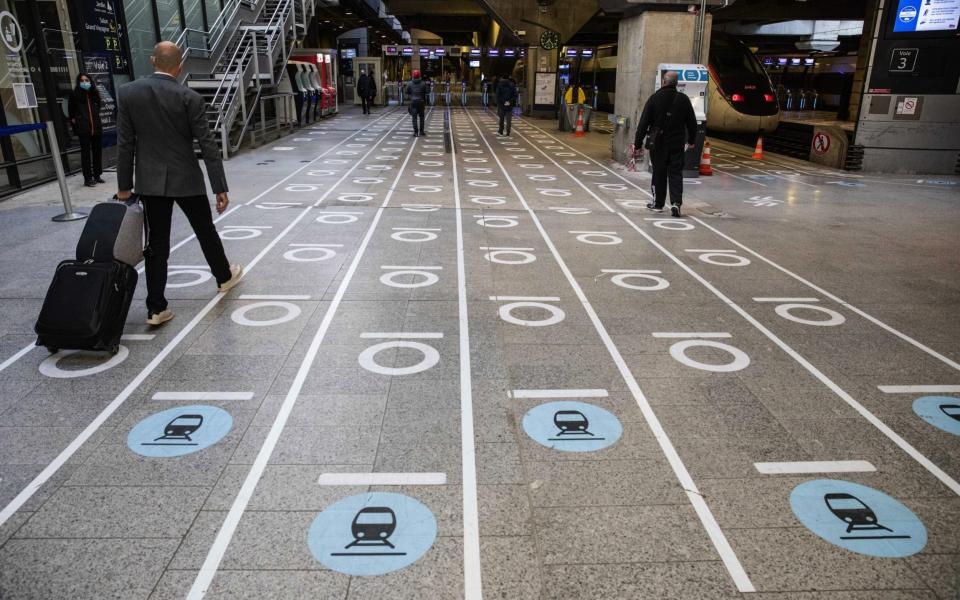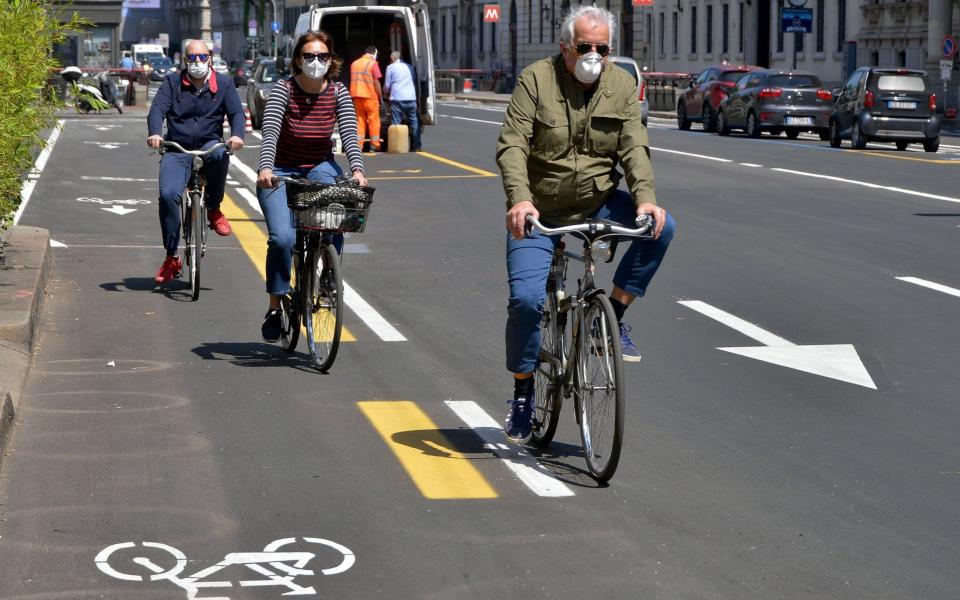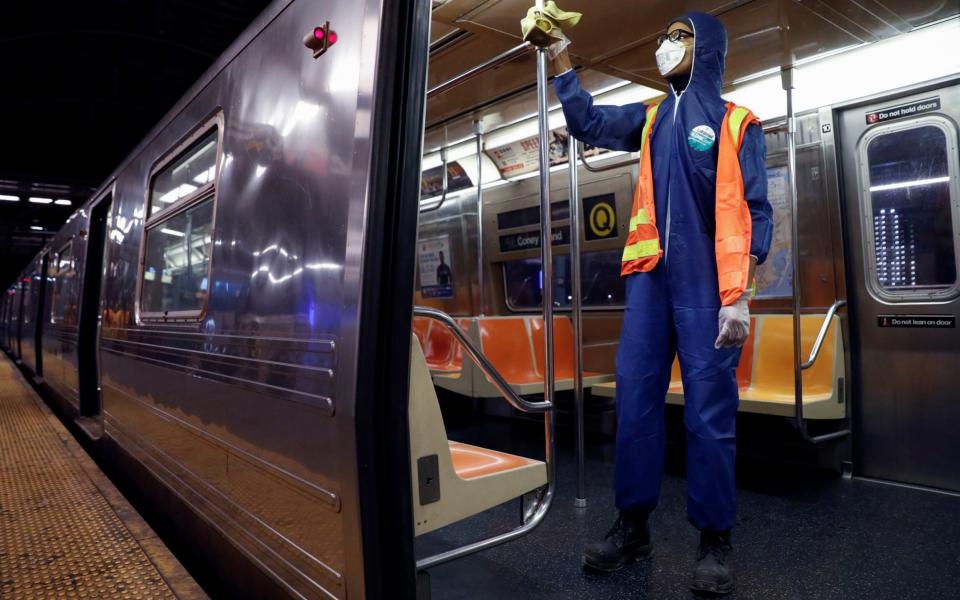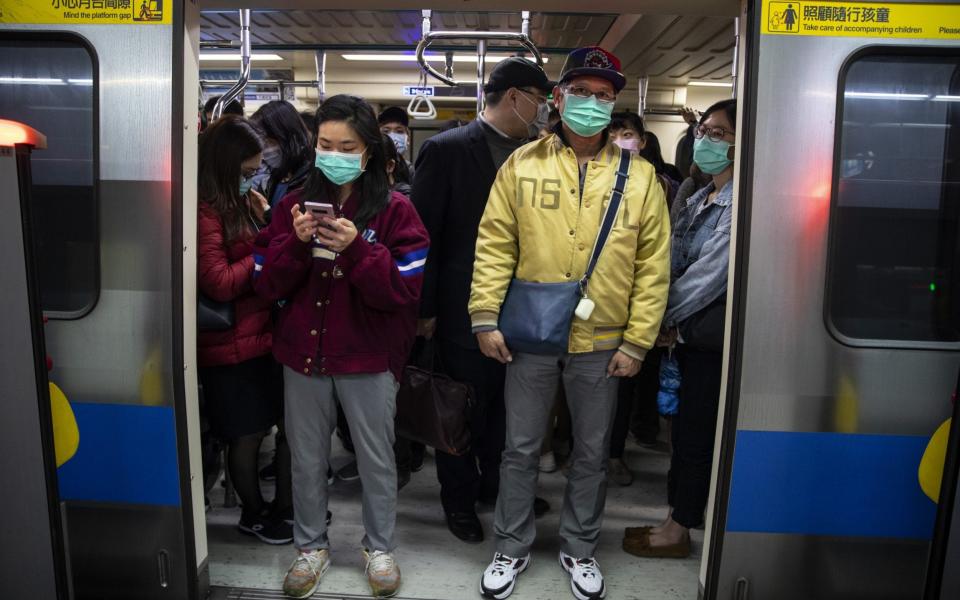From temperature checks to AI and empty seats: How countries are getting commuters back to work


It is one of the single greatest dilemmas facing countries coming out of coronavirus lockdowns - how to get their people back to work while maintaining social distancing measures.
And nowhere is that dilemma felt more keenly than in the world’s great commuter cities, where each morning and evening crowds would once have packed onto trains, buses and metro systems in their thousands for the journey to and from work.
Now governments and health and transport authoritie,s desperate to avoid a crippling second wave of Covid-19, are imposing a raft of measures on travellers designed to keep them apart, even in dense urban conurbations.
With the UK government now urging people who cannot work from home to go back to their workplaces The Telegraph looks at how they are facing up to the problem in Paris, Rome, Milan, New York and elsewhere.
France
Passengers on the Paris metro must produce a certificate from their employer saying they need to travel at peak times or risk a €135 fine.
Those with other "essential" reasons must fill in a separate form.
Masks are obligatory, with transport staff handing out around two million in the first two days of the network reopening.
The authorities' aim is not to exceed 20 percent of normal passenger density while running between 75-100 percent of metro trains and they have urged those who can to work remotely.
Some 60 of the busiest metro stations have been shut to avoid overcrowding and every other seat on metro trains is out of bounds to ensure social distancing of at least a metre.

However, trains have still been too crowded, particularly early in the morning.
In Châtelet station six AI cameras check how many people are wearing masks for statistical purposes, though offenders cannot be fined via this system.
Some 50km of temporary lanes have been built to encourage commuters to avoid trains and metros.
Valérie Pécresse, head of the Paris region, warned this week: "If we can't manage to sufficiently respect social distancing, we could still face shutting train lines or stations if they are too full."
Italy
In Italy commuters using public transport are required to wear protective masks and keep a distance of one metre from others. Signs are taped on train and bus seats indicating which ones have to remain empty, with markers on the floor to ensure social distancing.
People arriving at Termini train station in Rome also had their body temperatures taken by the staff.
Similar measures have been taken in Milan, where plans have also been brought forward for 70 km of new cycle lanes along with the expansion of pedestrian areas (see picture below).

However, hundreds of commuters were photographed waiting at Termini last week with social distancing rules not being followed, with others shown leaving stations in Naples and Milan in large numbers also appearing to flout the one metre spacing required.
Spain
Spanish transport authorities are preparing for a return to something like normal levels of demand by ensuring that passengers have access to protection against the spread of Covid-19.
Zaragoza’s buses and tram cars are fitted with hand sanitizing gel dispensers, while Barcelona’s Metro subway stations are installing vending machines for face masks, the use of which is obligatory in all forms of public transport in Spain.
At Metro stations in Bilbao and the entrances to Basque regional train services, random temperature checks are taking place to dissuade people with illness from travelling. Those caught with a fever are not allowed to travel.
Government rules state that alternate seats must remain empty, and maximum standing capacity is set at two commuters per square metre.
One Madrid Metro, the country’s busiest public transport system, a system based on AI is being developed that will automatically shut turnstiles when capacity in a station is reached.
But the system has already returned to more than half its usual daily capacity this week, despite the capital not yet having opened bars, restaurants or shops and with all schools closed. Madrid region’s transport secretary, Ángel Garrido said: “We have to lose our fear of the virus, and that’s why face masks have been made obligatory.”
New York
The New York subway’s 24-hour service has been reduced for the first time in its 110-year history.
In an unprecedented move, New York City’s Metropolitan Transportation Authority (MTA) from May 6 began closing all 472 subway stations for four hours every night from 1am until 5am in order to disinfect the carriages (see picture below).
They are using ultraviolet light, which is good at killing organic material though not yet known whether it is effective in destroying the novel coronavirus.

For essential workers who need to take the subway during the early morning hours, the state and city has laid on a free, alternate service on buses, coaches, and even for-hire vehicles.
The MTA has also installed blue markings spaced six feet apart on platforms in normally busy Manhattan stations to encourage social distancing and last month deployed transparent vinyl barriers on roughly 400 buses that cordon off the first few rows of seats.
Officials are also testing plexiglass barriers that encapsulate drivers in a see-through bubble.
Asia
In the crowded public transport systems of Taiwan, Hong Kong and South Korea, the widespread wearing of masks is seen as the key to protecting commuters from being infected with Covid-19.
In Taipei, Taiwan’s capital, the wearing of face masks has long been an accepted norm during flu season, but it has now been made compulsory on public transport (see picture below), with fines of $100 to $500 for anyone who does not comply.

A free mask is given to anyone who simply forgets to bring one, or they can be picked up in shops in major stations.
In the busiest stations, where social distancing is impossible, health officials monitor screens that measure the body temperatures of passers-by, triggering an alarm if anyone measures more than 37.5 degrees Celsius.

